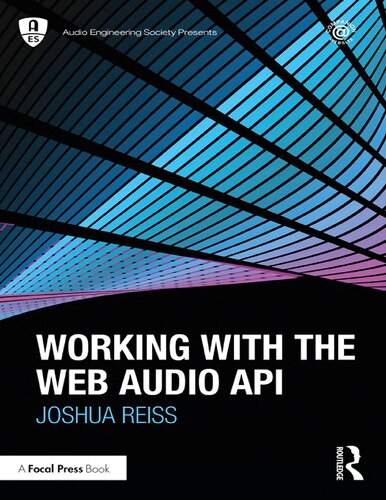

Most ebook files are in PDF format, so you can easily read them using various software such as Foxit Reader or directly on the Google Chrome browser.
Some ebook files are released by publishers in other formats such as .awz, .mobi, .epub, .fb2, etc. You may need to install specific software to read these formats on mobile/PC, such as Calibre.
Please read the tutorial at this link: https://ebookbell.com/faq
We offer FREE conversion to the popular formats you request; however, this may take some time. Therefore, right after payment, please email us, and we will try to provide the service as quickly as possible.
For some exceptional file formats or broken links (if any), please refrain from opening any disputes. Instead, email us first, and we will try to assist within a maximum of 6 hours.
EbookBell Team

4.7
26 reviewsWorking with the Web Audio API is the definitive and instructive guide to understanding and using the Web Audio API.
The Web Audio API provides a powerful and versatile system for
controlling audio on the Web. It allows developers to generate sounds,
select sources, add effects, create visualizations and render audio
scenes in an immersive environment.
This book covers all essential features, with easy to implement code
examples for every aspect. All the theory behind it is explained, so
that one can understand the design choices as well as the core audio
processing concepts. Advanced concepts are also covered, so that the
reader will gain the skills to build complex audio applications running
in the browser.
Aimed at a wide audience of potential students, researchers and
coders, this is a comprehensive guide to the functionality of this
industry-standard tool for creating audio applications for the web.
List of Figures
List of Code Examples
Resources
Preface
Aknowledgements
Chapter 1 Introducing the Web Audio API
Interlude - Generating sound with scheduled sources
Chapter 2 Oscillators
Chapter 3 Audio Buffer sources
Chapter 4 The Constant Source Node
Interlude – Audio parameters
Chapter 5 Scheduling and setting parameters
Chapter 6 Connecting Audio Parameters and Modulation
Interlude – Destination and Source nodes
Chapter 7 Analysis and Visualization
Chapter 8 Loading, playing and recording
Chapter 9 OfflineAudioContext
Interlude – Audio effects
Chapter 10 Delay
Chapter 11 Filtering
Chapter 12 Waveshaper
Chapter 13 Dynamic range compression
Chapter 14 Reverberation
Interlude – Multichannel audio
Chapter 15 Mixing audio
Chapter 16 Stereo panning
Chapter 17 Spatialized sound
Interlude – Audio worklets
Chapter 18 Working with AudioWorklets
Chapter 19 The wonders of audio worklets
References
Appendix – The Web Audio API Interfaces
Index